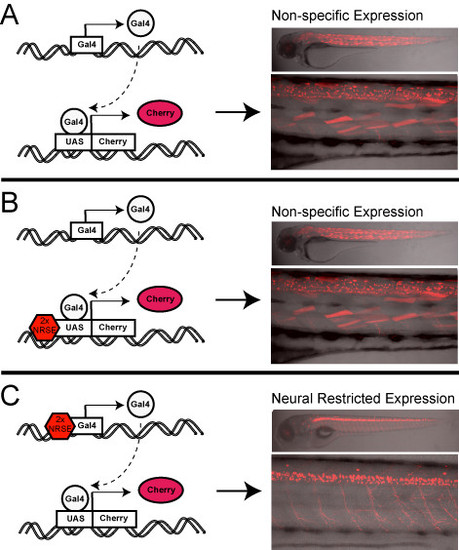Fig. 7
- ID
- ZDB-FIG-130610-13
- Publication
- Xie et al., 2012 - Silencer-delimited transgenesis: NRSE/RE1 sequences promote neural-specific transgene expression in a NRSF/REST-dependent manner
- Other Figures
- All Figure Page
- Back to All Figure Page
|
Summary. Schematic summarizing our findings regarding NRSE-delimited transgene expression within the context of bipartite driver (B) and effector/reporter lines (C). In each panel, the driver transgene (e.g., Gal4-based) is at the top and the reporter/effector (e.g., UAS) is at the bottom. Transgene products Gal4 and Cherry are shown as circles and ovals, respectively. (A) In the absence of NRSE sites, bipartite driver systems are prone to broad non-specific expression patterns with evidence of so-called background expression in skeletal muscle and heart (see Figures 1 and 2). (B) Associating NRSE sites with effector/reporter transgenes is not sufficient to restrict transgene expression to the nervous system (see Figure 3), possibly due to an inability to overcome enhanced transcriptional activity typical of artificial bipartite drivers (e.g., Gal4-VP16). (C) Incorporating NRSE sites into driver transgenes serves to bias expression toward neuronal specific patterns (see Figures 1 and 2). These findings suggest that creating novel associations between regulatory activators (e.g., enhancers) and silencer elements (e.g., NRSE sites) is a useful strategy for attaining tissue-specific expression patterns that extend beyond what can be obtained with standard transgenesis techniques. |

